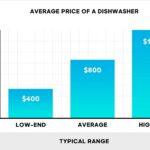Driving for Uber can seem like a flexible way to earn income, but understanding the true financial picture requires a deeper dive. This article explores how much an Uber driver actually makes, taking into account various factors influencing earnings and providing a realistic view of this gig economy opportunity.
Understanding Uber Driver Pay: The Basics
The amount an Uber driver earns isn’t a straightforward figure. It’s influenced by a combination of factors, including location, time of day, demand, and the type of rides completed. Uber drivers are independent contractors, meaning they’re responsible for their own expenses, which directly impact their take-home pay.
Key Factors Affecting Uber Driver Income
Several elements play a significant role in determining an Uber driver’s earnings:
-
Location: Larger cities with higher demand generally offer more opportunities for fares and potentially higher rates.
-
Time of Day and Day of the Week: Surge pricing, triggered by high demand during peak hours (rush hour, weekends, special events), can significantly boost earnings.
-
Expenses: Drivers are responsible for vehicle maintenance, gas, insurance, and other operating costs. These expenses directly reduce their profit.
-
Vehicle Type: Drivers using larger vehicles that qualify for UberXL or Uber Black can often command higher fares.
-
Uber Commission: Uber takes a percentage of each fare as a commission, which varies depending on the market and service.
-
Driver Incentives and Promotions: Uber frequently offers incentives like bonuses for completing a certain number of rides or guarantees for driving during specific periods.
Estimating Average Uber Driver Earnings
While precise figures vary widely, several sources provide estimates of average Uber driver earnings:
-
Gross Earnings vs. Net Earnings: It’s crucial to distinguish between gross earnings (total fares collected) and net earnings (earnings after expenses).
-
Industry Averages: Reports from various sources, including driver surveys and industry analysis, suggest that average gross earnings for Uber drivers in the US range from $20 to $30 per hour. However, after accounting for expenses, net earnings can be significantly lower.
-
Expense Considerations: Common expenses for Uber drivers include:
- Gas: A significant cost, especially for drivers covering long distances.
- Vehicle Maintenance: Regular maintenance, repairs, and depreciation.
- Insurance: Drivers typically need commercial or rideshare insurance.
- Taxes: As independent contractors, drivers are responsible for paying self-employment taxes.
-
Realistic Net Income: After deducting expenses, net earnings can often be closer to $10 to $20 per hour, depending on the factors mentioned above.
Maximizing Uber Driver Earnings: Strategies for Success
Drivers can employ several strategies to increase their earnings potential:
-
Strategic Driving Times: Focus on driving during peak hours and surge pricing periods.
-
Efficient Route Planning: Minimize mileage and gas consumption by planning routes effectively.
-
Excellent Customer Service: Maintain a high rating to attract more ride requests.
-
Taking Advantage of Incentives: Actively participate in Uber’s promotions and bonus programs.
-
Vehicle Choice: Consider the fuel efficiency and maintenance costs of the vehicle.
-
Tracking Expenses: Maintain accurate records of all expenses for tax purposes.
The Real Cost of Driving for Uber
Beyond the financial aspect, it’s important to consider the other costs associated with driving for Uber:
-
Time Commitment: Driving can be time-consuming, requiring long hours on the road.
-
Wear and Tear on Vehicle: Constant driving can accelerate vehicle depreciation and increase maintenance needs.
-
Stress and Fatigue: Dealing with traffic, passengers, and maintaining a high level of alertness can be stressful and tiring.
The Verdict: Is Driving for Uber a Profitable Venture?
Driving for Uber can be a viable option for earning supplemental income or as a full-time job, but it’s crucial to approach it with realistic expectations. Understanding the factors influencing earnings, carefully managing expenses, and implementing strategies to maximize income are essential for success. Before committing, potential drivers should thoroughly research their local market, estimate potential earnings and expenses, and weigh the pros and cons to determine if driving for Uber aligns with their financial goals. The key is informed decision-making and strategic execution.

